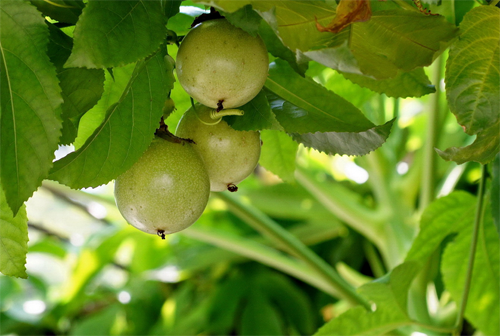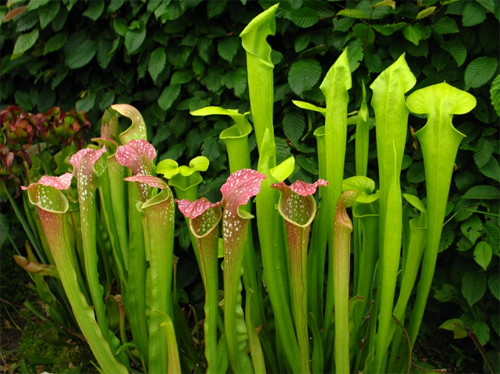What's the nickname of the planting method of Fructus Scutellariae?
Kochia is in the countryside, which is a very common plant. In the countryside, it is not used for viewing, but for making brooms. My darling, such a lovely plant is used to make brooms. What is the planting method of Kochia chinensis? What other aliases are there?

The planting method of Fructus Scutellariae:
1. Soil selection
In fact, this skin can be planted in all parts of the home, there is really no yard, you can also plant! Choose some fertile, loose sandy soil is the best, ordinary nutrient soil mixed with some river sand on it!
2. Introduction to reproduction
This skin can also be sowed and propagated. In general, it can be sowed in spring and autumn, preferably in April, sowing in slightly moist sandy soil to keep it moist and sprout in less than 10 days.
After that, there is more light, and the basin soil can be watered when it is dry.
3. Temperature and watering
The growth temperature of the skin is 10-30 ℃, it is more drought-resistant, the soil requirements are not strict, if you do not want to sow, then directly buy a pot back to raise it!
Watering should be appropriate, do not accumulate water, and do not be afraid of its drought, because it is quite resistant to drought, but it is afraid of stagnant water, usually once a week, thoroughly.
4. Fertilization and sunshine
Generally fertilize twice a year, ordinary compound fertilizer is fine, thin fertilizer is less applied, its demand is not big! See more light to grow stronger, potted summer to a little shade, the ground is stronger, do not need how shade.
5. Weeding
If you plant on the ground, you must get rid of weeds in time. There are very few weeds planted in pots, but you should also pull out weeds in time!
6. Disease and pest protection
The skin is sometimes harmed by aphids and is usually sprayed with 1000-1200 times of dimethoate EC.
The skin planted on the ground is sometimes parasitized by dodder, which is the kind of parasitic plant that climbs a vine. Just remove it when you see it.
Another problem is to be careful not to accumulate water on the line, remember that it is drought-resistant!
The alias of the skin son:
Broom seedlings, broom vegetables, the name is really not very likeable, its whole plant looks like a ball, usually emerald green, very tender kind of green, autumn can turn red, really great, especially when you see the red period, it is even more amazing!
If you take a closer look at the appearance of Fuzi and asparagus, it is really very easy to admit your mistake. This is the end of the introduction to the planting method of Kochia, hurry up to add a little green to your home.
What's a broomstick? Introduction to the plant data of broom vegetable
[FAQ] what is broomstick? Introduction to the plant data of broom vegetable
[expert answers]
Broom vegetable, also known as skin, also known as broom seedling, iron broom, wild spinach, is an annual herb of Chenopodiaceae. Broom vegetables have strong adaptability, widely distributed in China, and do not have strict requirements on climate, temperature and humidity. They grow in fields, mountain forests, wasteland, field sides, roadsides, orchards and courtyards.
The plant is erect, much branched and compact; leaves alternate, linear, fine, green, dark red after autumn; small flowers, lax fertilizer and water requirements, extensive management, resistance to pruning, alkali soil resistance, heat resistance, drought resistance, strong self-sowing ability, young stems edible. Its seed is also known as Fructus Rehmanniae, Chinese herbal medicine, which can be seen for details.
The plant is 50-100 cm tall, the stem is erect, much branched, and the whole plant is ovoid in shape. Leaves lanceolate, 2-5 cm long and 3-7 mm wide; with 3 main veins, stem leaves small, with 1 vein. Flowers often 1-3 fascicled in leaf axils, forming spikes. Perianth subglobose, light green, lobes triangular. Utricle oblate, pericarp membranous, free from seeds. Seeds black, glossy.
[editor's comments] the young stems of broom vegetables can be eaten, the seeds can be used as medicine, and the whole plant can be cut down after autumn and can also be used as a broom. it is a kind of plant with a wide range of uses. For more information about broom vegetables, you can follow the planting technology channel of our website.
Culture and management of ground skin (broomgrass)
Kochia scoparia (L.) Schrad.), alias: ground wheat, broom, broom seedling, broom vegetable, peacock pine.
The plant cluster is compact, the plant shape is oval to spherical, Obovate or oval, many and thin branches, pubescent, stem base semi-Lignification. Stems have many branches, leaves linear-lanceolate, simple leaves alternate, leaves linear, linear or strip-shaped. Spikes with small reddish-brown flowers, tiny flowers, no ornamental value, utricles oblate. The plant is tender green and the leaves turn red in autumn. The fruit is oblate and can be used as medicine, which is called Fructus Rehmanniae. Young stems and leaves can be eaten, and old plants can be used as brooms.
The method of breeding, sowing and breeding. Sowing takes place at the beginning of April. As the skin is straight-rooted and not resistant to transplantation, it adopts the way of open-field direct seeding. Select places with plenty of sunshine, good ventilation and good drainage, remove sundries, level and rake fine, at the same time, apply rotten and fine compost or barnyard manure as base manure, and then rake the bed surface. It is best to apply some superphosphate when sowing to make the root system strong. Fully irrigate the seedbed before sowing, and after the water completely seeps into the soil, sprinkle the seeds evenly on the seedbed with a small amount of fine sand, and then cover the soil evenly with a sieve with a 0.3cm aperture, with a thickness of 2 to 3 times the thickness of the seeds, so that the seeds can not be seen. Finally, a layer of straw was evenly covered on the bed surface to reduce the evaporation and loss of soil water and keep the soil moist for a long time. Before the seeds emerge, the topsoil dries and should be watered in time. When watering, water should be poured on the straw to prevent the seeds from being washed. After the seeds sprout, the straw should be removed in time to prevent the seedlings from overgrowing due to lack of light. It can also be cultured by cuttings. After a seedling transfer, it was planted in the garden or flower bed at the beginning of June. Because it is straight-rooted, it should be planted in time, otherwise the plant growth is difficult to recover. The distance between plants is generally 40 to 60 cm. Cultivation and management like light, drought tolerance, cold tolerance, alkali soil tolerance, pruning resistance, anti-inflammatory and hot climate, the cultivation of the skin is relatively easy, and the management is relatively extensive. The requirements of the skin of the soil are not strict, the general soil can grow, but if you choose good drainage, loose and fertile soil, the growth of the skin is the best. During the growth period to ensure the supply of fertilizer and water, fertilization can not be too much, generally topdressing liquid fertilizer for 1 or 2 times. It is necessary to maintain a certain degree of humidity in summer cultivation. The self-sowing ability of Kochia mandshurica is very strong. In order to prevent its self-sowing, it can be cut off in time when the leaf color does not turn red. Due to high humidity and poor ventilation, it is suitable to be harmed by aphids and other pests, so it is necessary to spray and control in time.
- Prev

Culture methods and points for attention of passionflower flowers, fruits, vines and flowers
The fruit of passionflower is not generally good-looking, just like grapes, it is round and cute. What are the breeding methods and precautions of passionflower? What do flowers and vines look like? Passionflower culture method: soil, passion fruit is not picky about soil.
- Next

How to raise bottle grass and overcatch insects will kill you.
Bottle grass looks like a bottle, and a lid, this bottle can also catch insects, if there is one at home, it is a natural pesticide, no pollution, how to raise bottle grass? How to raise bottle grass: it can endure high temperature of 40 ℃ and low temperature of-10 ℃, while northern subspecies are more tolerant of low temperature.
Related
- Fuxing push coffee new agricultural production and marketing class: lack of small-scale processing plants
- Jujube rice field leisure farm deep ploughing Yilan for five years to create a space for organic food and play
- Nongyu Farm-A trial of organic papaya for brave women with advanced technology
- Four points for attention in the prevention and control of diseases and insect pests of edible fungi
- How to add nutrient solution to Edible Fungi
- Is there any good way to control edible fungus mites?
- Open Inoculation Technology of Edible Fungi
- Is there any clever way to use fertilizer for edible fungus in winter?
- What agents are used to kill the pathogens of edible fungi in the mushroom shed?
- Rapid drying of Edible Fungi

